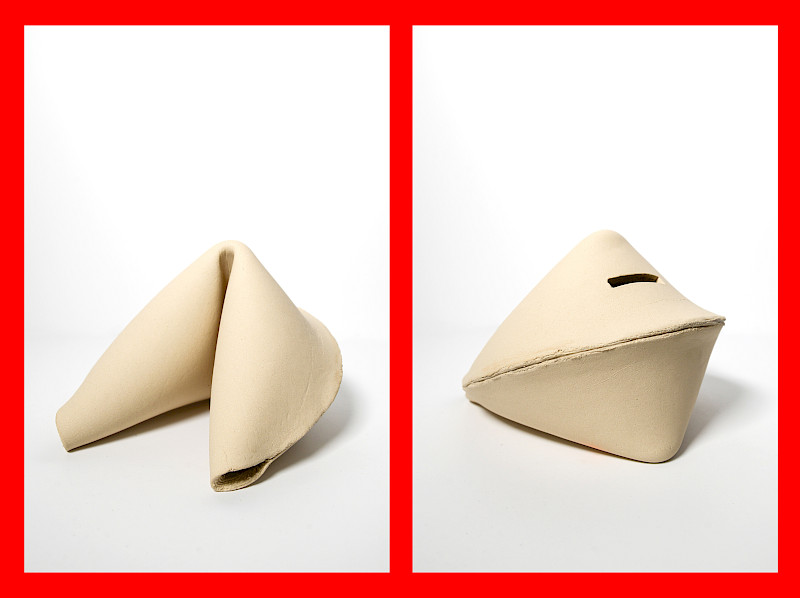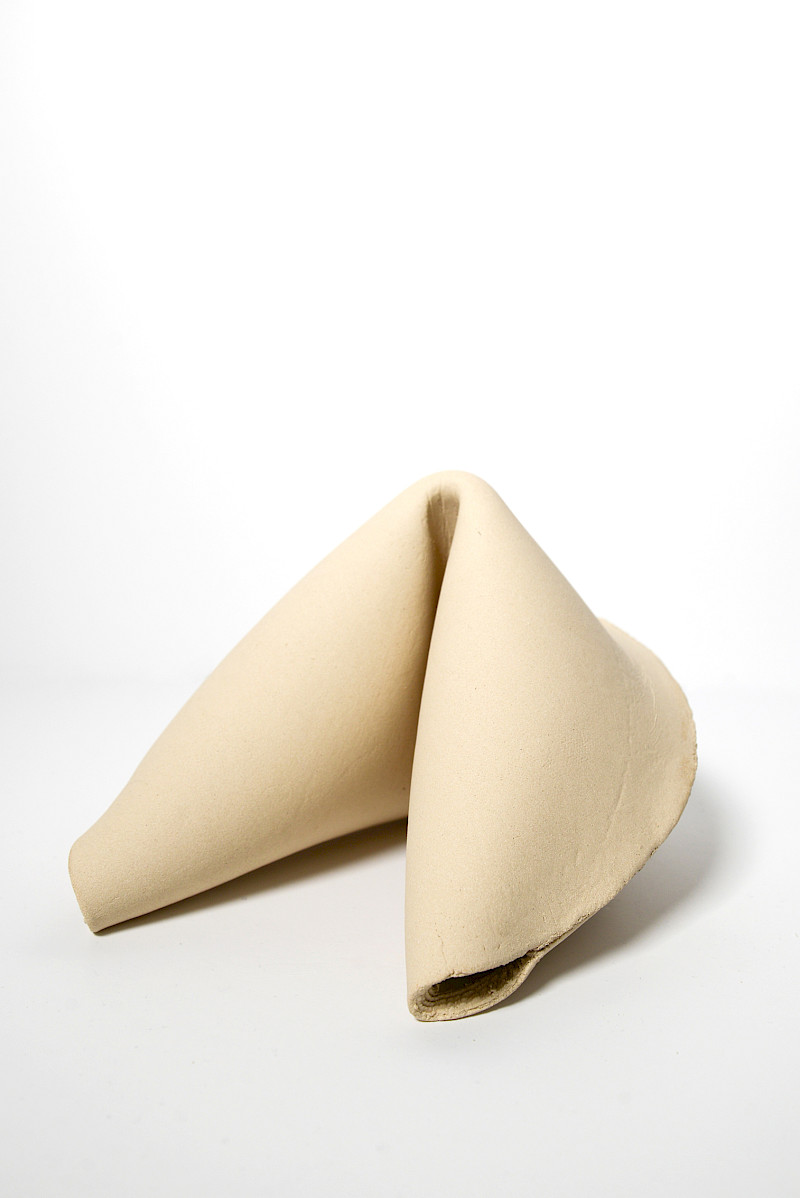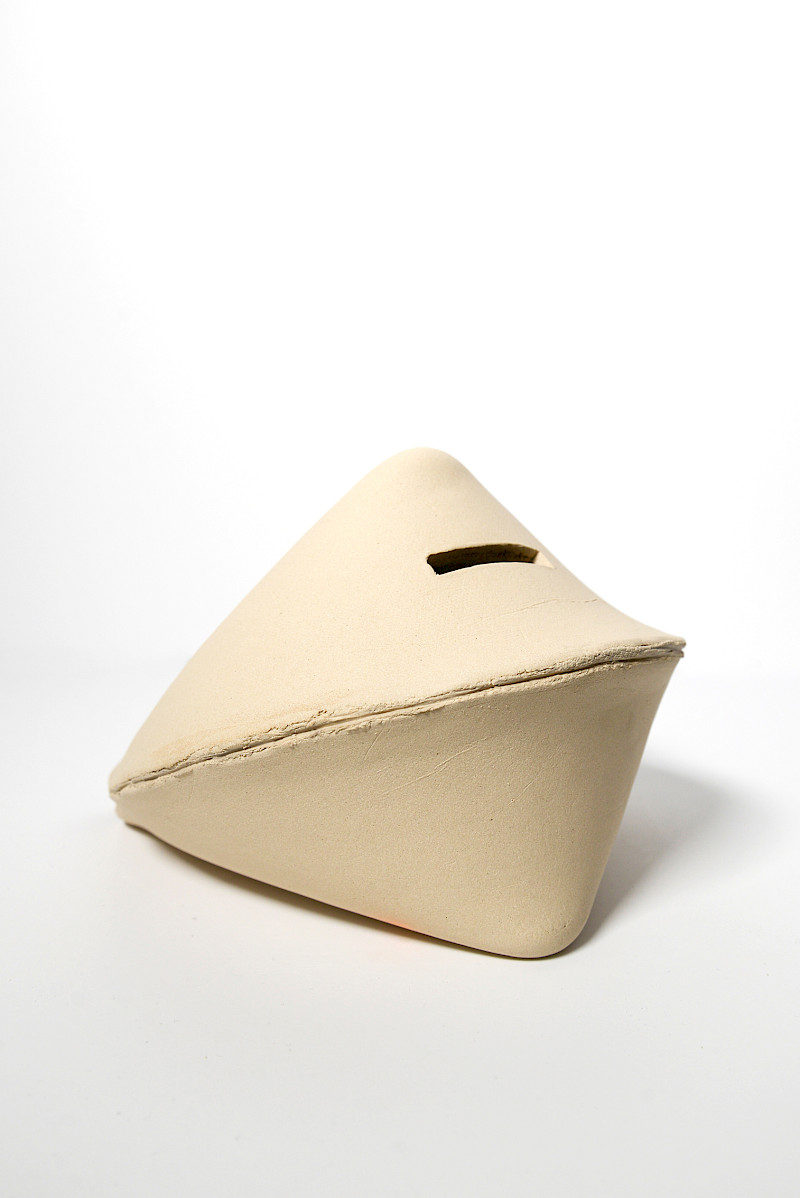Fortune Cookie Piggy Bank
The Fortune Cookie Piggy Bank - a ceramic sculpture created to collect and protect your most valuable and cherished items. This unique artwork has a distinct charm, as its contents can only be accessed through the deliberate destruction of the sculpture itself. This Fortune Cookie Piggy Bank differs from its edible version in being shaped before it goes into the kiln, yet is still intricately folded using the same technique.
The artist created a total of 88 unique editions of the Fortune Cookie Piggy Banks, embracing every attempt to create these sculptures, resulting in each sculpture being unique in shape, size and result. Each sculpture in the collection is numbered on the base. The number 88 is assigned to the first Fortune Cookie Piggy Bank and the number 1 represents the last in the series, marking a journey from start to finish. An edition of this series is on display at The Shrine as part of NNNFAIR 2023: PRO$PERITY NOW!
Benjamin Li is a conceptual artist based in Rotterdam. His work pushes on questions of identity, representation, displacement, everyday life, foodways and a sense of home. He currently approaches these questions centrally through an exploration of the Chinese-Indonesian restaurant.
Since 2014, Benjamin has visited over 1.000 Chinese-Indonesian restaurants across the Netherlands in an endeavour to build an archive of this restaurant. During these visits he has collected menus, pieces of tableware and written memories of his encounters. Importantly, he has also taken photographs of over 200 unique Chinese-Indonesian dishes at these restaurants. These photographs have been developed into a 1000-piece puzzle series, into a lightbox, and into a more popularly accessible 500-piece puzzle made in collaboration with LAM museum and MAMA and a line of coffee-mugs. Related work includes a series of epoxy carrot roses, three video-installations, and a ceramic reinterpretation of the fortune cookie.
Benjamin finds beauty in the Chinese-Indonesian restaurant, but for him it is also a way to come to understand his Chinese roots and family history. Many of his family members, including his biological parents, have worked in the restaurants as way to survive and integrate into Dutch society. With his work Benjamin tries to honour the restaurant, where others at times mock it. In earlier work, he has more broadly questioned stereotypes of Asian people (Yellow-Series). Today he sees the significance of his work in straddling the tension between bringing out the absurdity of certain stereotypes and fostering a reappraisal of the beauty and heritage of the Chinese-Indonesian restaurant.



